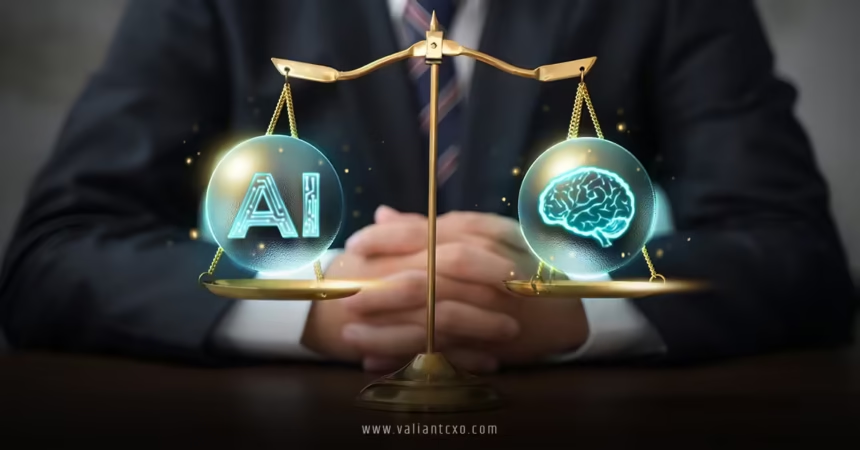How US Laws Address Workplace AI Surveillance is a topic that’s sparking conversations across boardrooms and break rooms alike. As artificial intelligence (AI) weaves its way into workplaces—tracking keystrokes, monitoring emails, and even analyzing facial expressions—the question looms: are there enough legal guardrails to protect workers? Imagine a workplace where every click, pause, or sigh is scrutinized by an algorithm. It’s not science fiction; it’s happening now. But don’t worry, the US legal system is starting to catch up, with a patchwork of federal and state laws stepping in to balance innovation with employee rights. Let’s dive into the nitty-gritty of how these laws are shaping the future of workplace surveillance.
The Rise of AI Surveillance in the Workplace
Picture this: you’re sipping coffee at your desk, unaware that an AI tool is tracking how long you linger on a spreadsheet or how many emails you send per hour. Sounds intrusive, right? AI surveillance tools are becoming the new normal in workplaces, from retail warehouses to corporate offices. These tools promise efficiency—helping employers spot productivity trends or even predict employee turnover. But here’s the catch: without oversight, they can erode privacy and create a chilling effect where workers feel like they’re under a microscope.
How US Laws Address Workplace AI Surveillance is critical because these tools often collect sensitive data, like biometric information or behavioral patterns, without clear employee consent. The stakes are high, and the legal landscape is scrambling to keep pace with technology that’s evolving faster than you can say “algorithm.”
Why AI Surveillance Matters
AI surveillance isn’t just about counting keystrokes. It’s about power dynamics. Employers gain unprecedented insights into their workforce, but at what cost? Workers might feel dehumanized, reduced to data points. Studies suggest that excessive monitoring can tank morale and spike stress levels. So, how do we balance the benefits of AI with the right to privacy? That’s where US laws come in, acting like a referee in a game where the rules are still being written.
Federal Laws Tackling Workplace AI Surveillance
When it comes to How US Laws Address Workplace AI Surveillance, the federal government has laid some groundwork, though it’s more of a starting point than a finished playbook. There’s no single, comprehensive federal law explicitly regulating AI in the workplace, but existing labor and privacy laws are being stretched to cover this new terrain.
The National Labor Relations Act (NLRA)
The National Labor Relations Act (NLRA), enforced by the National Labor Relations Board (NLRB), is a heavyweight in protecting workers’ rights to organize and engage in collective bargaining. But how does it tie into AI surveillance? The NLRB’s General Counsel, Jennifer Abruzzo, has flagged AI-driven monitoring as a potential threat to workers’ Section 7 rights, which protect activities like discussing wages or forming unions. If an AI tool is used to sniff out union activity—say, by flagging employees who email about “labor organizing”—it could violate the NLRA. The NLRB is pushing for stronger enforcement to ensure AI doesn’t become a tool for anti-union surveillance.
The Fair Labor Standards Act (FLSA)
The Fair Labor Standards Act (FLSA) governs wages and hours, but it’s also stepping into the AI surveillance ring. The Department of Labor (DOL) has issued guidance emphasizing that AI tools used for monitoring must comply with FLSA rules. For example, if an AI system tracks time worked but misclassifies breaks or off-hours tasks, it could lead to wage theft. The DOL’s 2024 Field Assistance Bulletin clarifies that employers can’t hide behind “the AI did it” excuse when it comes to paying workers fairly.
Executive Order 14110: A Guiding Light
In October 2023, President Biden signed Executive Order 14110, titled “Safe, Secure, and Trustworthy Development and Use of Artificial Intelligence.” This isn’t a law, but it’s a big deal for How US Laws Address Workplace AI Surveillance. The order directs federal agencies, including the DOL, to develop guidelines for ethical AI use in workplaces. It emphasizes worker empowerment, transparency, and human oversight—principles that could shape future regulations. For instance, it encourages employers to involve workers in AI deployment decisions and ensure algorithms don’t undermine job quality or privacy.
State Laws: The Patchwork Approach
While federal laws set a baseline, states are where the action is for How US Laws Address Workplace AI Surveillance. With no comprehensive federal AI law, states like California, Illinois, and New York are stepping up, creating a mosaic of regulations that vary by jurisdiction.
California’s Proactive Stance
California is leading the charge with laws like the California Consumer Privacy Act (CCPA), which, as of 2023, grants workers data privacy rights. Employees can request to know what data their employer collects via AI tools, correct inaccuracies, or even demand deletion. Imagine an AI tracking your bathroom breaks—under the CCPA, you could challenge that data collection if it feels excessive. Additionally, California’s AB 1221, introduced in 2025, requires employers to give 30 days’ notice before using AI surveillance tools like facial or emotion recognition. These laws aim to keep workers in the loop and prevent sneaky surveillance.
Illinois and Biometric Privacy
Illinois has been a pioneer with its Biometric Information Privacy Act (BIPA), enacted in 2008 but increasingly relevant for AI surveillance. BIPA regulates how employers collect and store biometric data—like facial scans or voiceprints—often used in AI tools. If your boss uses an AI to analyze your facial expressions during a Zoom call, they need your consent and a clear policy on data use. Violate BIPA, and employers face hefty fines. This law shows how states are filling gaps left by federal inaction.
New York City’s AI Law
New York City’s Automated Employment Decision Tool (AEDT) Law, effective since July 2023, is a game-changer for How US Laws Address Workplace AI Surveillance. It targets AI tools used in hiring or promotions, requiring employers to conduct independent bias audits and publish results. While it focuses on decision-making rather than surveillance per se, it sets a precedent for transparency. If an AI tool monitors performance to decide who gets a raise, it must be audited to ensure it’s not biased against protected groups like women or minorities.
Litigation: Testing the Legal Waters
Laws are one thing, but court cases are where the rubber meets the road. How US Laws Address Workplace AI Surveillance is being shaped by lawsuits that challenge AI’s role in employment decisions. Take the Mobley v. Workday case, filed in 2023 in California. Derek Mobley, a Black applicant over 40, alleged that Workday’s AI screening tools discriminated by favoring younger, non-minority candidates based on biased data points like zip codes or education history. The case highlights how AI vendors, not just employers, could be liable for discrimination—a wake-up call for companies relying on third-party tools.
Another notable case involves Sirius XM, where plaintiffs claim AI-driven hiring tools disproportionately rejected Black applicants. These lawsuits underscore a key issue: AI can amplify existing biases if not carefully designed. Courts are starting to hold employers accountable, pushing them to rethink how they deploy AI surveillance.
Key Challenges in Regulating AI Surveillance
Regulating AI in the workplace is like trying to herd cats while riding a unicycle—it’s tricky, and the stakes are high. One major challenge is the “pacing problem.” AI tech evolves faster than lawmakers can draft bills, leaving gaps in oversight. Another hurdle is the black-box nature of AI. Many algorithms are opaque, even to employers, making it hard to prove bias or ensure compliance. Plus, the patchwork of state laws creates a compliance nightmare for companies operating across state lines. How can businesses keep up when California demands one thing and Texas another?
Bias and Discrimination Risks
AI surveillance tools can seem neutral, but they’re only as good as the data they’re trained on. If historical data reflects biases—like favoring men for leadership roles—the AI might perpetuate those biases. The Equal Employment Opportunity Commission (EEOC) settled its first AI discrimination lawsuit in 2023, signaling that regulators are watching. Employers need to conduct regular bias audits, but many lack the expertise or resources to do so effectively.
Privacy vs. Productivity
Here’s a question: where’s the line between monitoring for efficiency and invading privacy? AI can track every keystroke, but should it? Laws like the CCPA and BIPA aim to protect workers’ data, but they don’t always address the psychological toll of constant surveillance. Workers might self-censor, fearing their every move is judged by an algorithm. Balancing productivity with privacy is a tightrope walk that laws are still figuring out.
Best Practices for Employers Using AI Surveillance
So, how can employers use AI without running afoul of the law? It’s not about ditching AI but using it responsibly. Here are some practical tips for navigating How US Laws Address Workplace AI Surveillance:
Transparency Is Key
Be upfront with employees about what AI tools you’re using and why. Under California’s AB 1221, you might need to give 30 days’ notice. Even without a legal mandate, transparency builds trust. Nobody likes feeling spied on, so explain how the AI benefits both the company and workers—like catching inefficiencies or improving safety.
Conduct Bias Audits
Regular audits, like those required by New York City’s AEDT law, can catch biases before they spiral into lawsuits. Hire independent experts to review your AI tools annually. It’s like getting a health checkup for your algorithms—prevention is better than a legal cure.
Keep Humans in the Loop
AI should assist, not replace, human judgment. The DOL’s 2024 guidelines stress human oversight for significant employment decisions. If an AI flags someone for low productivity, have a manager review the data before acting. It’s like using GPS but still checking the road signs.
Partner with Compliant Vendors
If you’re using third-party AI tools, vet them carefully. Ask vendors for bias testing results and compliance documentation. The Mobley v. Workday case shows that vendors aren’t off the hook for discrimination, so choose partners who prioritize fairness.
The Future of Workplace AI Surveillance Laws
What’s next for How US Laws Address Workplace AI Surveillance? The crystal ball is hazy, but trends suggest more regulation is coming. States like Colorado and Illinois are already following California’s lead, with laws like Illinois’ HB 3773 (effective 2026) targeting algorithmic discrimination. Federally, the SAFE Innovation AI Framework and the Stop Spying Bosses Act are proposed guidelines that could inspire binding laws. Meanwhile, the Trump administration’s lighter regulatory approach might slow federal progress, leaving states to fill the gap.
Internationally, the EU’s AI Act, which bans certain high-risk surveillance practices, could influence US policymakers. Imagine a future where emotion recognition AI is outlawed in US workplaces, as it is in the EU. For now, employers must stay nimble, adapting to a shifting legal landscape while embracing AI’s potential.
Conclusion
How US Laws Address Workplace AI Surveillance is a complex but crucial topic as AI reshapes the modern workplace. From federal efforts like Executive Order 14110 to state pioneers like California and Illinois, the US is building a framework to protect workers from intrusive surveillance while fostering innovation. Laws like the NLRA, FLSA, CCPA, and BIPA are stepping up, but gaps remain. Employers must prioritize transparency, bias audits, and human oversight to stay compliant and build trust. Workers, meanwhile, deserve to know their rights in this AI-driven world. Stay informed, ask questions, and advocate for a workplace where technology serves people, not the other way around. The future of work depends on it.
FAQs
1. What is the main focus of How US Laws Address Workplace AI Surveillance?
The focus is on balancing AI’s efficiency benefits with workers’ privacy and rights. Laws like the CCPA and BIPA protect against intrusive data collection, while federal guidelines push for ethical AI use.
2. How does the California Consumer Privacy Act relate to workplace AI surveillance?
The CCPA grants workers rights to know, correct, or delete data collected by AI surveillance tools, ensuring employers are transparent about monitoring practices.
3. Can AI surveillance violate workers’ rights under How US Laws Address Workplace AI Surveillance?
Yes, if AI tools interfere with rights like organizing under the NLRA or lead to biased decisions, they can violate laws, as seen in cases like Mobley v. Workday.
4. Why are bias audits important for AI surveillance tools?
Bias audits, required by laws like New York City’s AEDT, help ensure AI doesn’t discriminate based on race, gender, or other protected traits, keeping workplaces fair.
5. What should employers do to comply with laws on workplace AI surveillance?
Employers should be transparent, conduct regular bias audits, maintain human oversight, and choose compliant AI vendors to align with How US Laws Address Workplace AI Surveillance.
For More Updates !! : valiantcxo.com


